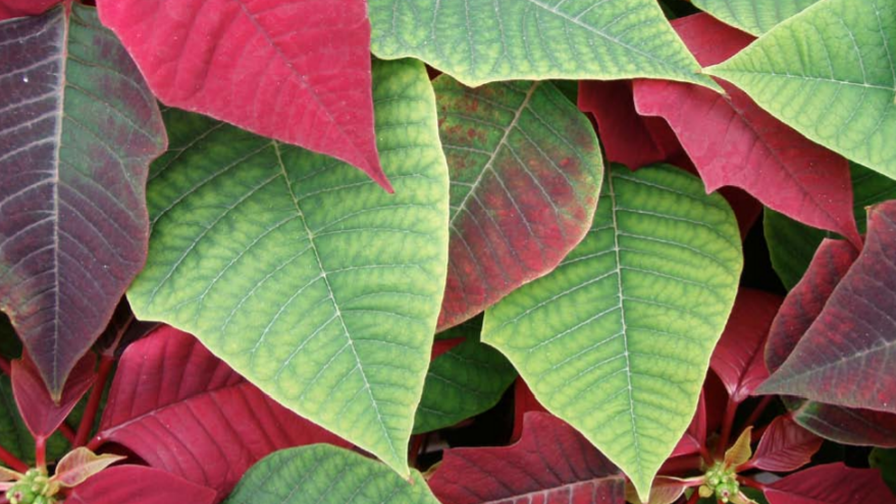Monitoring Magnesium Deficiency in Poinsettias

If magnesium deficiency occurs after the bracts form, then the symptoms of interveinal chlorosis can appear on the green leaves just below the bracts. This can be confused with iron deficiency symptoms, so test the substrate and tissue to confirm your diagnosis. Photo: Brian Whipker
Poinsettias have a relatively high requirement for magnesium. Many areas of the Midwest and Great Plains have naturally occurring magnesium in their irrigation water, so the development of magnesium deficiency is uncommon.
For other areas without magnesium supplied in their irrigation water, growers need to add supplemental magnesium to avoid deficiencies. A recent e-GRO Alert focused on identification of magnesium deficiency symptoms and management practices.
According to North Carolina State University’s Brian Whipker, the initial symptom of magnesium deficiency is the development of interveinal chlorosis (yellowing between the veins) of the lower leaves. As symptoms progress, most of the leaf will become yellow. If the deficiency is not corrected, then necrotic leaf spotting will occur.
Magnesium deficiency symptoms can be tricky to identify. On younger plants, the symptoms will appear on the lower, older leaves. This is in contrast to iron deficiency symptoms that occur on the upper, youngest leaves. To confuse the issue further, if magnesium deficiencies develop late in the production cycle, then the symptoms will appear on the leaves just below the bracts. Submitting substrate and tissue samples to a commercial lab will be required to confirm the lack of magnesium or if the substrate pH is too high.
Read the full eGro alert here.










